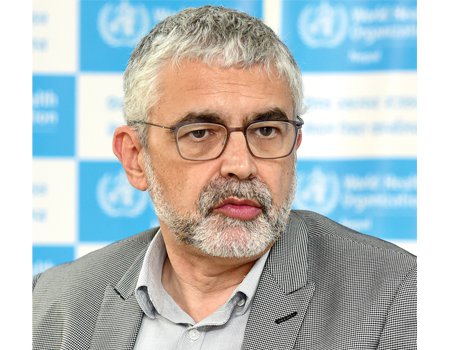
The World Health Organization (WHO) Nepal Representative Dr. Jos Vandelaer cautioned everyone to continue to take all necessary safety precautions against the virus, warning that there is still huge risk of the disease.
WHO Representative to Nepal Dr. Vandelaer said that the worst is not behind us. “There is a huge risk that the virus can at some point spread in the community.”
In his interview with The Rising Nepal, WHO representative in Nepal Dr. Vandelaer has said that the government has done well in its COVID-19 response, especially the quick decision it took in declaring the nationwide lockdown.
He also said that Nepal has not seen widespread community transmission because of the lockdown and quarantine. He added that by and large the quarantine helped keep the cases under control.
If you look around the city, people are not keeping physical distance. They are not doing what they are supposed to do and that’s exactly what the virus wants,
“If we are too close to each other, if we do not wash our hands, if we do not wear face masks, the virus can start spreading,” he cautioned in his interview with the daily.
“My main message to everybody is: please maintain physical distance, wash your hands, if you cough, cough in your elbow, wear a mask when there are lots of people around,” he added.
- Nepal-China Aid Project Meeting Held In Lhasa
- Apr 25, 2024
- Ambassador Subedi Presented The Letter Of Credence To President Of Italy
- Apr 25, 2024
- Nepal-Qatar Joint Business Council Formed
- Apr 25, 2024
- Weather Forecast: Isolated Brief Rain Is Likely To Occur At Few Places Of Koshi, Sudurpaschim And Karnali
- Apr 25, 2024
- Qatar And Nepal Ink Several MoUs, Returned Home Completing Two Days Visit
- Apr 24, 2024
















